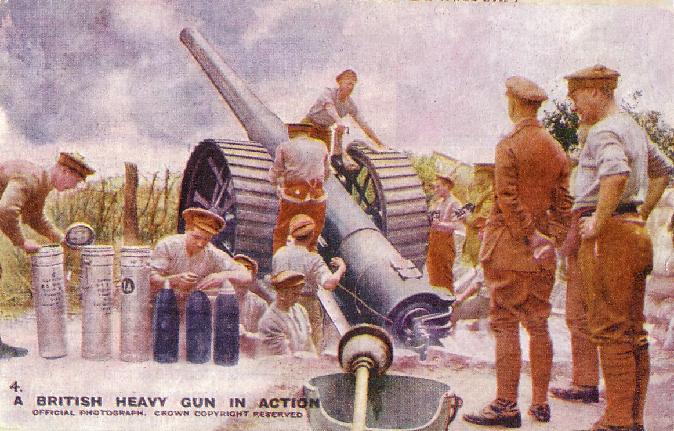British artillery pounds the enemy
This photograph and caption appeared in
the Daily Mail Weekend magazine in 2007

World
War I was an artillery war. Most (75 per cent} of the ten million soldiers
who died on all sides in the conflict were killed by shells, and a direct
hit from a big gun could literally blow a man to smithereens: this accounts
for many dead soldiers still being officially listed as `missing'. In this
picture, an officer (with arms behind back} is supervising a team readying a
six-inch howitzer, which fired 26 hundredweight shells to a distance of up
to six miles. The men on the left are unpacking and `priming' the shells -
setting the fuse in the nosecap for the range required. This howitzer was
one of the most successful and widely used guns of the war and more than
4,000 were built. So efficient was it that it remained in service until the
end of World War II in 1945. Weighing 4.2 tonnes, the guns needed a team of
ten men to operate them. By the end of the war, Britain's artillery had
developed a tactic called `the creeping barrage', which involved laying down
a curtain of shellfire just in front of advancing infantry, which moved
forward in line with their progress. Although this reduced casualties, it
could mean that shells falling short killed soldiers by `friendly fire'. |
|